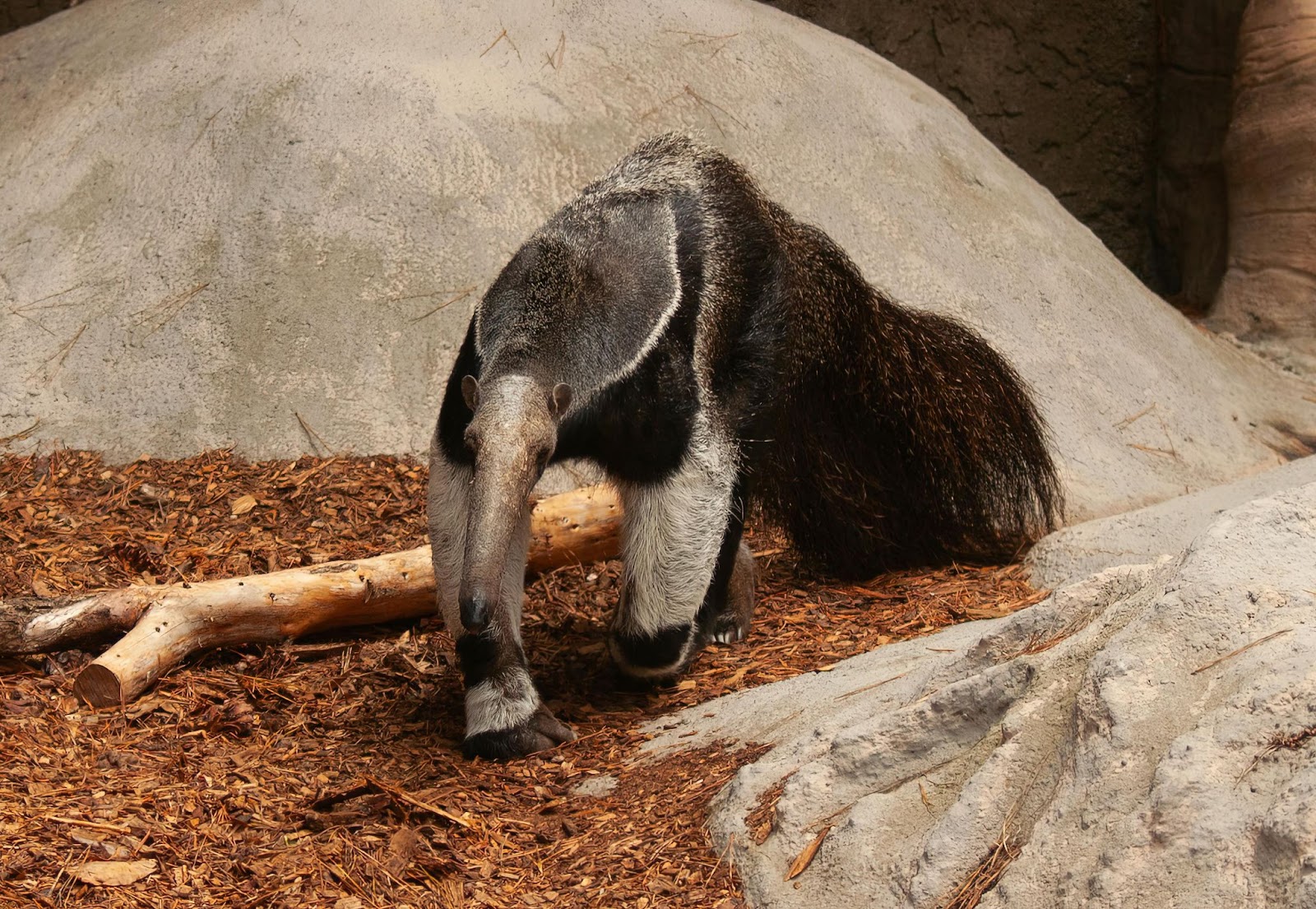Found primarily in the lush landscapes of Central and South America, anteaters exhibit a wide range of sizes and colors.
The Giant Anteater, as the name implies, is the largest of the bunch, measuring up to seven feet in length, including its impressive tail.
Sporting a distinctive black-and-white coat, this species roams grasslands, forests, and wetlands, utilizing its formidable claws to break into ant and termite mounds with unmatched precision.
While the Giant Anteater is the largest, the Silky Anteater is its smaller, tree-dwelling counterpart.
This pint-sized marvel, also known as the pygmy anteater, possesses a silky, golden-brown fur coat and relies on its prehensile tail for balance as it navigates the treetops of the rainforest.
The Tamanduas, with their bushy tails and distinctive facial markings, are medium-sized anteaters that prefer the canopy life, displaying remarkable agility in their pursuit of ants and termites.
Despite their distinctive features and captivating behaviors, anteaters encounter various challenges in the present day. The task of accurately estimating the global population of anteaters is complicated by their elusive nature and expansive habitats.
Nevertheless, with a current estimated population of 5,000, it’s noteworthy that this species is considered extinct in areas of Belize, Costa Rica, Guatemala, and Uruguay.
In response to these challenges, scientists and conservationists are dedicating their efforts to diligently collect data and formulate effective strategies to safeguard the survival of these remarkable creatures.
The conservation status of anteaters varies among species, with the Giant Anteater classified as Vulnerable by the International Union for Conservation of Nature (IUCN).
This designation highlights the urgent need for conservation efforts to protect their habitats and address the threats they encounter, including habitat loss, road mortality, and hunting.
Similar to numerous species, giant anteaters face a significant threat from habitat destruction. Apart from changes in land use and development, their grassland habitats are frequently devastated by fires.
Notably, these fires are often initiated by sugar cane growers who burn their fields before harvest. These fires not only result in the destruction of the habitat but also pose a threat to the slow-moving anteaters, causing injury or even death.
Conservation efforts for anteaters are multifaceted, involving both local communities and international organizations.
One key aspect of these efforts is habitat preservation, as anteaters rely on healthy ecosystems to thrive.
Protected areas and wildlife reserves play a crucial role in safeguarding the diverse habitats that anteaters call home.
Additionally, raising awareness about the importance of anteaters in maintaining ecological balance is vital to garnering support for conservation initiatives.
One notable example of successful conservation work is the establishment of the Giant Anteater Conservation Project in Brazil.
This project focuses on researching the behavior and ecology of Giant Anteaters, implementing conservation measures in key habitats, and engaging local communities to protect these magnificent creatures.
Through community education programs and outreach efforts, the project aims to foster a sense of responsibility and pride among local residents, encouraging them to become stewards of their natural heritage.
Despite these positive strides, challenges persist, and ongoing commitment is essential to secure the future of anteaters.
Continued collaboration between governments, non-profit organizations, and local communities is crucial to addressing the complex issues threatening anteaters and their habitats.
Additionally, supporting sustainable development practices and responsible tourism can contribute to the long-term well-being of these remarkable creatures and the ecosystems they inhabit.
Anteaters embody the magic of nature in Central and South America, serving as unsung heroes in maintaining the delicate balance of our ecosystems.
While they face challenges, their resilience calls us to action, urging us to unite in safeguarding their habitats and spreading awareness about their vital role in the grand tapestry of life.
Picture a world where these extraordinary creatures continue to grace the landscapes, enchanting present and future generations alike.
It’s a collective mission to ensure their freedom, inspiring awe and teaching us profound lessons about the beauty and interconnectedness of our natural world.
Together, let’s stand as stewards of these enchanting beings, preserving their habitats and the wonder they bring to the intricate dance of life.
Assaf Levy is the Founder & CEO of BioDB.com – a group tasked with collecting conservation data, raising awareness for biodiversity loss, and fundraising.







